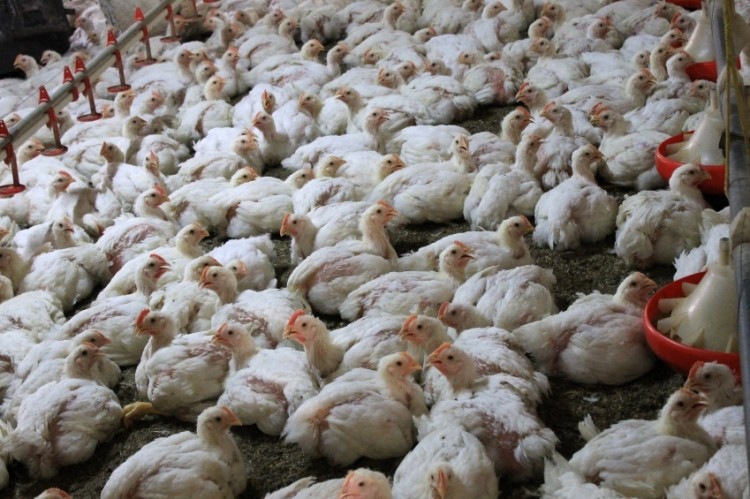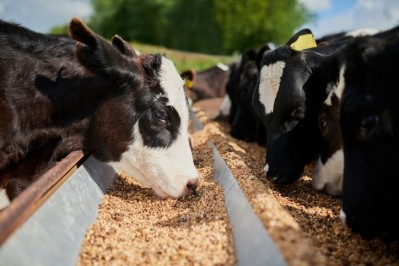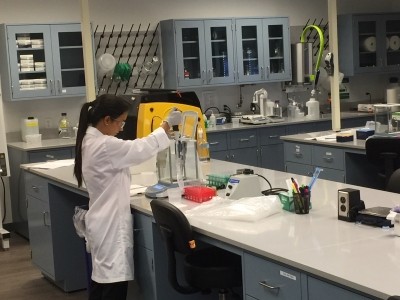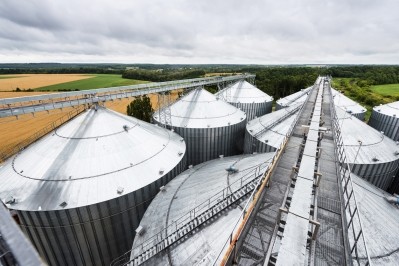Monogastric diets: best practices for combatting phytate on the agenda at IPPE

The UK headquartered feed ingredients company is launching its animal nutrition technical video series on some pioneering scientific approaches to improving nutrient release in feed at IPPE in Atlanta this month. The mode of action of phytase super-dosing is the topic kicking of the series.
The idea of super-dosing is to destroy all phytate in the diet using phytase. As phytase is an anti-nutrient, this will lead to performance improvements in the target animal greater than those expected from the simple release of nutrients due to added phytase which improves FCR (feed conversion rate) and rate of gain in broilers, said the company.
The method involves the addition of sufficient phytase to quickly destroy all phytate present in the diet at inclusion levels of 1500 FTU per kg of feed or greater of an enhanced E.coli phytase.
Hadden Graham, technical director at that company, told us the US market was the first to see registration for AB Vista’s super-dosing optimized phytase, Quantum Blue — in January 2012 — so poultry producers there are much more aware of the approach compared to their European counterparts.
“The practice is still in its infancy in Europe. Quantum Blue only received EU registration in February 2014.
“Additionally, as a huge percentage of US poultry production is integrated, chicken companies in that market can see the benefit of super-dosing in finished broilers. The savings are made through better performance of monogastrics so a standalone feed mill may be more reluctant to go down the super-dosing road due to what they might perceive as the initial higher feed formulation costs involved,” he said.
Mode of action
The video being launched at IPPE, said Graham, aims to help improve the understanding as to why there are additional improvements in performance in pigs and poultry when there is super-dosing of phytase compared to lower — 500FTU — of phytase dosing.
He said when industry thinks about phytases, it should think about them as enzymes to effectively breakdown IP5, IP4, and IP3 as well IP6, not only to produce the phosphorus needed but to get rid of inhibitors of gastric digestion and enable the animal to grow more efficiently.
“Traditionally, when most people in the industry think about phytase they think about it as a means to provide phosphorus from phytic acid or IP6 as a way of saving money in formulations.
Standard doses of phytase, traditionally targeted at releasing an extra 1 kg of available phosphorus (avP) per ton of feed, need to release approximately 2.5 of the 6 P units on the phytate (IP6) molecule. This results in the accumulation of lower phytate esters, primarily a mixture of IP4 and IP3, in the animal gut.
The anti-nutritive effects of phytate (IP6) in reducing nutrients availability, including minerals and proteins, are well known; what previously was less well known is that these lower phytate esters such as IP4 and IP3 also have anti-nutritive effects.
What AB Vista did when introducing Quantum Blue super-dosing was essentially destroy all phytate in the gut, releasing close to 5 of the 6 P-units. Thus, by taking away the anti-nutritive effects of IP4-3, super-dosing successfully improved animal performance,” he explained.
Trial data
Mike Bedford, research director at AB Vista Feed Ingredients, previously told us super-dosing has been shown in six successive trials conducted in the US, Asia, UK and Brazil to give an average of a 4 point improvement in FCR when compared to a diet supplemented with a standard phytase dose.
“Benefits in performance, bone strength, fat digestibility and antioxidant status have been found with feeding higher levels (at least 1,000 to 2,000 FTU per kg) with no nutrient sparing beyond the first 500 FTU per kg of feed,” he added.
Though for super-dosing to succeed, he said, the phytase must be capable of working at very low IP6, IP5, IP4 and IP3 concentrations in order to ensure IP6 and IP4 levels are minimized and inositol production is maximized.
Inositol is a nutrient generated by complete phytate hydrolysis and is said to promote growth and feed efficiency even in phosphorus deficient poultry and pig diets.











